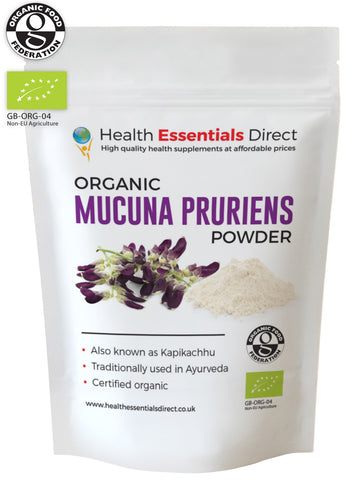Organic Siberian Ginseng Powder (Popular Adaptogen, Perfect for Ginseng Tea)
1Organic Siberian Ginseng Powder
-
Perfect for Siberian Ginseng Tea
-
Popular Adaptogen
-
Certified Organic by Organic Food Federation
About Siberian Ginseng
The Siberian ginseng plant (Eleutherococcus senticosus), is a woody shrub whose earliest use is traced back to the Middle East and Asia, precisely Russia, Siberia, Japan, Korea and China. Among the common terminologies used to refer to the powder is eleuthero, ussuri, thorny pepperbrush, devil's bush, shigoka, touch-me-not, wild pepper, Russian root, and ci wu jia in China. Other plants that are in the same family as Siberian ginseng are ivy or common pennywort i.e. the Araliaceae family. The root, which contains bioactive phytochemicals, has an expansive root system with plenty of fine, white to grey root hairs. The hairs look like a beard growing from the roots.
The plant is of small stature and mostly grows to a maximum height of about 2m. The roots thrive in moist but well-drained soil. Sandy soils with lots of humus are the ideals soils for the growth of the plant. Also, it prefers to grow under shade as minimal sunlight is sufficient for its survival. The plant takes several years to mature fully; one can harvest the roots from the third year. Before this, the nutrients present in the roots and the root mass are not yet of age. Both male and female organs are found on the same plant. The Siberian ginseng plant has prickly thorns on the stem which are an adaptation of the plant. The plant preferable grows in coniferous mountain areas where there are lots of shade, especially at the edge of forests. Once the bare minimum requirements are met, there is no need to keep looking after the plant.
Siberian ginseng has a history that goes back to about 2,000 years ago. The rhizome formed part of the most renowned herbs at the time. The Chinese, who are credited for popularizing the herbal plan, ingested the plan before they embarked on tumultuous tasks. Some of those who used it include mountain climbers who hiked high elevations such as Mt. Everest and the Himalayas. They believed that the powder enabled their bodies to adapt better to the changing physical, emotional, and mental stress around them. The rhizome was also taken by those who intended to avoid cold and flu especially the colder months of the year.
One of the narratives at the time was Siberian ginseng was discovered after there was a reduced market supply for Panax ginseng due to over-harvesting. It is at this point that researchers, mostly Russians, decided to try out Siberian ginseng. Both are members of the Araliaceae family. Low supply meant that the prices of Panax and American ginseng went through the roof therefore researchers had to think fast of a sustainable solution for this menace. To date, Siberian ginseng is still popular in Russia. This is also partly attributed to the fact that a lot of research on the plant is done there. Since the 18th century, Siberian ginseng powder has been a key component in the supplements consumed by different sets of Russian athletes. The powder came up as a cheaper alternative to other species of ginseng which were proving to be quite expensive.
- Please note it is against MHRA guidelines for us to talk about any potential health benefits for this supplement however a quick google search on the potential benefits and you may be surprised.
How To Use: We suggest taking up to 6 grams daily (3 teaspoons), can be added to smoothies, foods or made into a hot tea.
Share this Product
- Reviews
- Questions
Excellent ginseng
A fine product, at a great price and easy to buy







